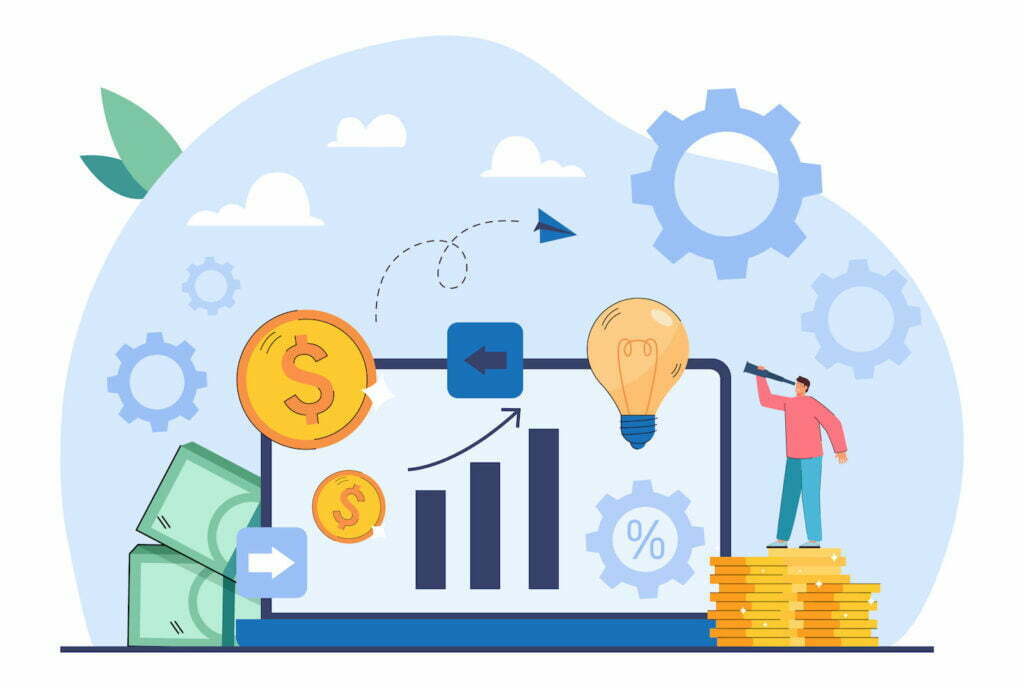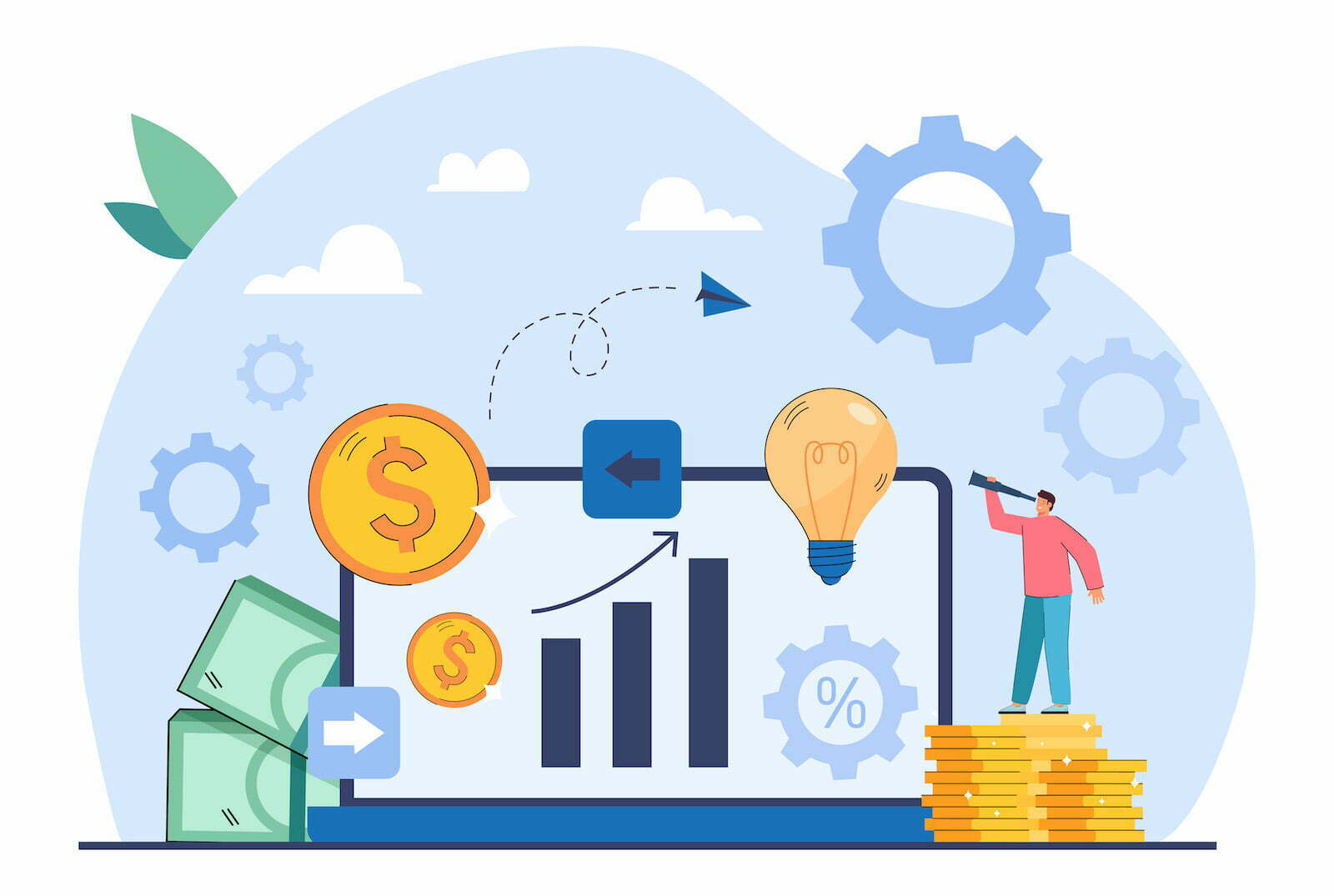The process of pricing a product or a service can be challenging and time-consuming. On the one hand, you want to make the price attractive to a potential customer, and on the other – you want to reach specific profit margins and avoid leaving money on the table.
One way to achieve that goal is to conduct a competitive pricing analysis.
Pricing your products or services based on competitor prices can help you stand out from the crowd and attract customers while still protecting your market share.
Conducting сompetitive pricing analysis requires a lot of time and research. In the following guide, you will see how it is done and how you can use it to beat your competition.

What Is a Competitive Pricing Strategy?
A competitive pricing strategy (also known as competitor-based or competition-based pricing), is a way to determine the optimal price point for your product or service based on what your competitors charge.
What Is Competitive Pricing Analysis?
Competitive pricing analysis is a process of evaluating customers’ reactions to new prices. It is based on polls, questionnaires, and historical data. In the majority of cases, such an analysis does not take the costs and profits of the business into account. Instead, it focuses solely on the customers’ response to a price. After conducting an initial price analysis, its findings and other pricing factors can help create an attractive offering.
Competitive analysis is used across different businesses and industries. However, it is especially popular in highly competitive markets where companies sell similar products or services. In such cases, an attractive price is the most efficient way to catch the eye of a potential buyer.
Why Is Using a Competitive Pricing Strategy Important?
Buyers like to compare prices from a number of sellers to find the best deal possible. If you have the means to collect and analyze market data, including competitive pricing data, you can see where you stand. With that kind of insight, you can offer optimal prices that will catch buyers’ attention, gaining a competitive edge.

What Is the Process of Competitive Pricing Analysis?
Ensuring Data Quality
First, you have to ensure you work with complete and accurate data.
The following criteria are particularly important in the process of evaluating data quality:
- Delivery time. Whenever conducting a competitive pricing analysis, you need to stay up to date with all the product and pricing data. Ideally, it should be updated every half an hour. It is fairly easy to do with pricing monitoring software.
- Percentage of errors. While data matching is usually a fully automated process, it can still make errors. Verifying the correctness of source data by hand can make a pricing analysis more effective and yield better results.
- Depth of comparisons. You have to take a wide range of information regarding a product into account. Focusing on its price and nothing else is not enough. To obtain high-quality market data, you have to take other things into account as well. The said things might include color, material, shape, weight, and technical characteristics.
- The proportion between planned and delivered data. Not all data that you need to conduct your competitor pricing analysis might be available on a competitor’s website. As a result, the amount of usable data at your disposal might be smaller than what you were planning to obtain.
Determining Data Parameters
Next, you have to determine which important data parameters you want to collect and analyze. Here are a few examples of such parameters:
- Market share. If you want to get a clearer picture of the competitive landscape of a given product type, you might want to focus on products sold by businesses with the biggest market share.
- Discount codes and sales. A price-sensitive customer is likely to look for discount codes and sales prior to making a purchase. As such, it is important that you monitor competitors’ promotional activity.
- Price index. A price index is a metric that measures the average change in prices over a certain period of time in a given region. It can help you understand a competitor’s pricing strategy and give you a visualization of the impact that market dynamics can have on sales.
- Product availability. If you can see that an item you sell is in short supply and no competitor has it, you might want to make its price higher to increase profits. On the other hand, if it is widely available, you should lower the price to attract potential customers.
Studying Internal Company Data
A competitive analysis will not be as effective as it could possibly be if you do not study the internal data of your company. By doing so, you will be able to gain a better understanding of your position in the market and find it easier to set optimal prices.
Want to get set up with competitor monitoring, price tracking and even more?
Book a free demo to monitor any e-commerce competitor pricing and get instant info of important price movements and more!
Categorizing Competition
Having gathered enough competitive intelligence, you will have to categorize your competitors. You can do it according to market share, target audience, and product quality. In general, competitors can be divided into three categories:
- A primary competitor is after the same buyer category as you.
- A secondary competitor sells upscaled or downscaled versions of what you are selling.
- A tertiary competitor sells products that are indirectly relevant to what you are selling.
Categorizing your competition will make a price analysis less time-consuming. In addition, you will be able to come up with more relevant business goals related to strengthening your position in the market.
Benefits of Using Machine-Based Pricing Tools
To make analyzing competitors’ prices easier, you should start using machine-based pricing tools. That way, a piece of software will collect and analyze data for you, saving you time and resources.
Such an approach has a number of benefits, including scheduled delivery of data, precise pricing recommendations, increased accuracy, and the ability to process large amounts of complicated data in a timely manner. Aside from that, you get to save plenty of time that you can use to come up with better pricing strategies.
Tracking Competitors
To have a full understanding of the market, you should keep an eye on your competitors. For instance, you could monitor their social media accounts, websites, and product descriptions. Aside from that, you might want to sign up for their official newsletters. The better your understanding of the competitive landscape of your products, the more appropriate your pricing decisions will be.
Reading Customer Reviews
Shoppers tend to be swayed by third-party validation. For that reason, you should determine how customers view your competitors.
Conducting such market research will help you understand what your target customers expect and want. That knowledge can then be used to deliver products or services that are tailored to your target market’s actual needs.

Benefits of a Competitive Pricing Analysis
Exploiting Competitors’ Pricing
No matter how you want to position yourself in the market, you will not be able to do it properly if you do not know what your competition is doing. To give an example, you can’t really undercut your competitors and position yourself as the cheaper alternative if you do not know how your prices compare to theirs.
Tracking Your Market Position
As the situation in the market changes, so should your prices. Competitive pricing analysis is a simple way to check where to set your expectations. It can also help you identify opportunities to gain a competitive edge over your rivals.
Understanding where your pricing puts you against the competition is crucial to identifying potential opportunities for growth. This information can eventually lead to increased market share and bigger profits.
Avoiding Lost Profits
If you set the price of a given product based on competitive pricing analysis, you reduce the risk of severely underpricing the product and losing thousands of dollars.
Improving Your Pricing Position
Conducting competitive pricing analysis makes it easier for you to set attractive prices, which reduces your chances of losing customers to your competitors. What is more, it can lead to increased sales and better brand perception.

In Conclusion
To sum up, conducting a competitive pricing analysis is a complicated process. To do it right, you need to take a number of different things into consideration, ranging from various parameters and data quality to your internal company data.
To make the entire process easier, you might also need to look for an automation solution for data gathering and processing. Making the switch from a manual pricing process to an automated one can be intimidating, but it is worth the hassle. If done right, it can help you save time and bring in additional profits.
It is worth noting that a competitive pricing analysis is not a one-time process. The market is fluid and ever-changing. In order to stay relevant, you will have to commit to studying your competition and analyzing their prices on a regular basis. Only then will you be able to fully understand your place in the industry and come up with creative ways to stand out from the crowd.

Manager with experience in leading team of software developers and testers during implementation of internal and external IT projects. Ceo of Brandly360.com.


